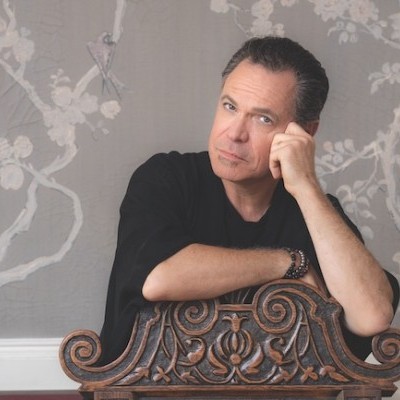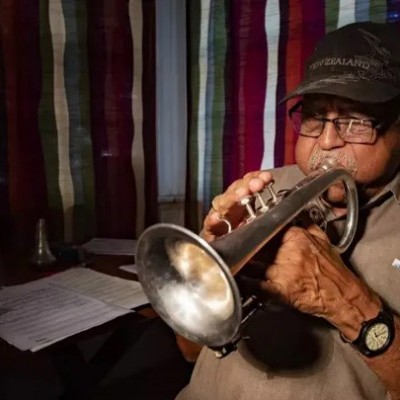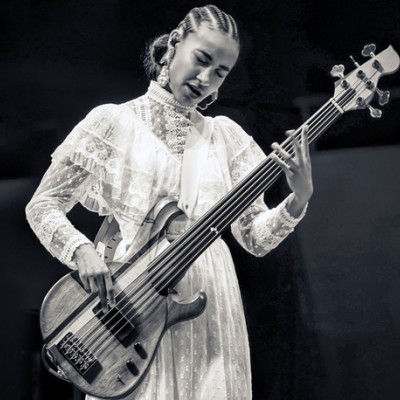Oct 28, 2025 10:47 AM
In Memoriam: Jack DeJohnette, 1942–2025
Jack DeJohnette, a bold and resourceful drummer and NEA Jazz Master who forged a unique vocabulary on the kit over his…
One of the most influential and versatile improvisers of the late 20th century, Grateful Dead guitarist Jerry Garcia filtered traditional American music through a sensibility that could be as disciplined and studied as it was open-eared and loose. Spawning a virtual school of players, both slavish cover-band imitators and those drawing from Garcia in more subtle ways, the Dead’s approach itself has become a recognizable mode of American music making, from the group’s songbook to Garcia’s preferred scales, from a vocabulary of jam tricks down to the conversational relationship between instruments.
An illuminating new box set, Before The Dead (Round Records JGFRR1016; 42:00/64:52/42:41/71:33 ***1/2), shines light on Garcia’s earliest music—recordings between 1961 and 1964—most often remembered as his “bluegrass period” for his virtuosic banjo playing. But the four-CD/five-LP collection reveals a far richer picture. Later in the decade, the Dead would veer from style to style, with Garcia as the chief architect of their sound, and Before The Dead spotlights an equally restless and thirsty young player integrating musical information at a breathtaking clip.
While many of these recordings long have circulated among collectors in fuller form, Before The Dead is the first official release for nearly all of the music collected here. More importantly, it provides a few crucial missing pieces and a sequencing that clearly illustrates how an 18-year-old high school dropout came to pick up an acoustic guitar and set himself in motion.
Opening with a previously unreleased 1961 tape recorded at a birthday party, Garcia plays in a duo with future Dead lyricist Robert Hunter on bass. Drawing from the Kingston Trio (“Santy Anno”) and Pete Seeger (“Oh, Mary Don’t You Weep,” with Hunter doing his best Seeger singalong bellow), the performance is filled with the pleasant good cheer of the Kingstons. But barely a month later, Garcia already is digging into the more scholarly New Lost City Ramblers corner of the folk revival (“Brown’s Ferry Blues”).
As the meticulous liner notes detail, Garcia also was plugged into the emerging national social network of pickers from practically his first strum. No casual player, the nearly four hours of music uncover a musician filled with ambition and energy. By a year after the earliest recording, Garcia had turned to banjo. That, too, became a progression, from the ghostly frailings of the Sleepy Hollow Hog Stompers, recorded in June 1962 (“Little Birdie”), to the shredding Bill Keith style he’d accentuated by his time with the Black Mountain Boys in 1964 (“Salt Creek”). The sequence resulted in Garcia’s instantly recognizable electric guitar playing with the Dead, each crystalline, articulated note picked with a banjoist’s precision.
Far more than the story of a banjo player, though, Before The Dead documents the first moments of Garcia’s quest to become a complete musician. He fills numerous roles, playing mandolin with his wife Sara in 1963 (“Deep Elem Blues”) and leading a band as a rhythm guitarist (“She’s More To Be Pitied”). There are no recordings of his fiddle or autoharp playing—nor, for that matter, his electric bass playing with the Zodiacs, an r&b band he occasionally played with at Stanford fraternity parties. There is, however, an extraordinary seven-song solo performance from late 1961. And if his singing was still a work in progress, his guitar playing already was quick and purposeful (“Railroad Bill”). Attempting an a cappella ballad (“The Wagoner’s Lad”) with an earnest introduction, it is preceded by one of many illustrative moments across the collection, when Garcia admits his discomfort at singing without an instrument in his hands, picking up a guitar to hold “just for the hell of it.”
His singing vastly improves, too, and his best vocal performance is almost unquestionably a 1962 version of “Sittin’ Top of the World,” a sweet and relaxed reading from a rare radio station session. Garcia doesn’t play any instrument at all there, either, accompanied only by Ken Frankel’s gentle slide guitar. At nearly every juncture of the box, Garcia works on his harmonies, his particular vocal charisma obvious from the get-go.
While there are some repeated songs among the 84 tracks recorded during a dozen occasions, there only are few. But Before The Dead illustrates Garcia’s vast capacity for taking in songs, some remaining in his repertoire for the remainder of his life, turning up with the Dead in the ’80s (like “Rosa Lee McFall”) or his long chain of acoustic-oriented projects that would continue through the years with many of the same collaborators who arrive over the course of the set’s chronology.
The performances themselves aren’t as singular as what Garcia later would create, and the bluegrass isn’t quite at full sparkle. But Garcia’s developing musical personality overflows even at a distance of more than half of a century, sprawling with a friendly vastness that rewards repeat listens.
Garcia’s autodidactic scholarliness would send him on a cross-country tape-trading quest during the summer of 1964, leading him to the feet of bluegrass king Bill Monroe. But, by autumn’s end, the rigor of bluegrass would be trumped by Garcia’s desire for more fun, always his most specific desire and creative aspiration.
Months after the last recording on Before The Dead came the decidedly non-chops-oriented Mother McCree’s Uptown Jug Champions with Bob Weir and Ron “Pigpen” McKernan. Less than a year later, they transformed into The Rolling Stones-loving Warlocks. And by the end of 1965—debuting with their new name at Ken Kesey’s first public Acid Test—they became The Grateful Dead. Garcia never again would play acoustic instruments with such single-minded focus, but he would continue to charge headlong into his next piece of music. DB

Jack DeJohnette boasted a musical resume that was as long as it was fearsome.
Oct 28, 2025 10:47 AM
Jack DeJohnette, a bold and resourceful drummer and NEA Jazz Master who forged a unique vocabulary on the kit over his…

“Think of all the creative people I’m going to meet and a whole other way of thinking about music and a challenge of singing completely different material than I would have sung otherwise to my highest level in dedication to the moment,” Elling says about his Broadway run.
Sep 9, 2025 1:18 PM
Kurt Elling was back at home in Chicago, grabbing some family time in a late-June window between gigs. Sporting a smile…

Pat Metheny will perform with his Side-Eye III ensemble at Big Ears 2026 in Knoxville, Tennessee, next March.
Sep 9, 2025 12:19 PM
Big Ears has announced the lineup for its 2026 festival, which will take place March 26–29 and include 250…

“[That’s] the thing of the beboppers,” Bradford said. “These guys were important for not only playing that wonderful music, but they knew a sort of social stance, you see?”
Sep 9, 2025 1:07 PM
It was a calm, balmy, near-perfect evening in Westwood, California, not far from UCLA, in the expansive courtyard at…

Esperanza Spalding closed an audacious Chicago Jazz Festival set with “Endangered Species.”
Sep 9, 2025 11:50 AM
The 45th Chicago Jazz Festival kicked off its headline events with two erudite individuals, Esperanza Spalding and…